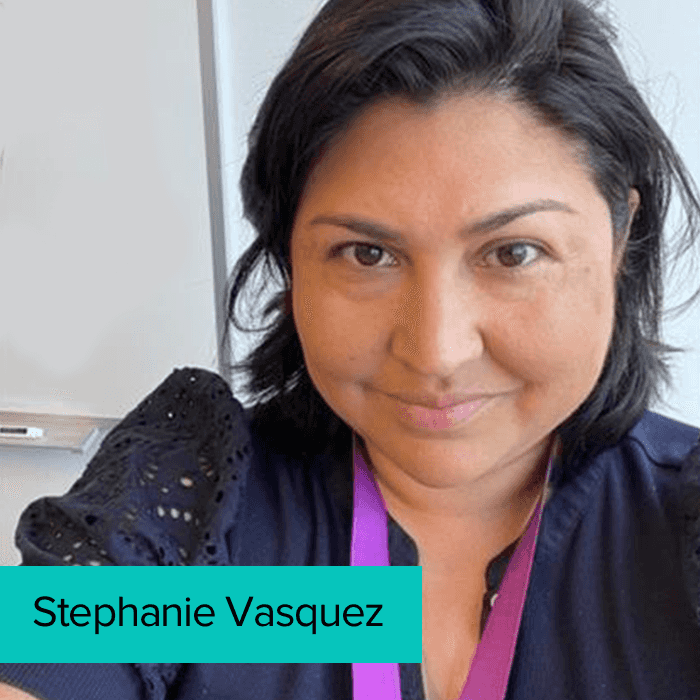Key Learnings for a More Inclusive Global Health Landscape
November 30, 2023
By Stephanie Vasquez, Director of Global Health
As a woman-owned small business specializing in human-centered design and transformative technologies both domestically and internationally, Bixal has a unique advantage in advancing digital health applications and tools.
We are able to apply insights from our domestic work with U.S. government agencies and clients to international development contexts. This advantage is particularly relevant in global health, where digital applications have gained rapid traction across numerous countries.
The digital challenges within U.S. government agencies often parallel those faced by other host country governments and Ministries of Health. The rapid development of digital applications frequently surpasses the establishment of national policies and local structures. Collaborating with various federal agencies, we craft digital strategies and policies while concurrently building or modernizing applications, transitioning from outdated or isolated applications to contemporary, scalable solutions.
Throughout this modernization process, which often occurs in tandem with policy development, we consistently adhere to digital development standards to ensure the consistency, scalability and adaptability of digital applications. We have amassed valuable insights that contribute to shaping a more inclusive and equitable landscape in global health. Key takeaways include:
Consistent Care and Attention of Digital Applications
Digital applications in the healthcare sector demand ongoing care and attention. Managing electronic medical records, tracking referrals and aggregating patient-level data for insights into disease trends are essential functions. However, it's important to recognize that the software and infrastructure supporting these applications undergo continuous change and evolution. This is integral to ongoing optimization and responsiveness to user needs.
Planning for ongoing development and maintenance is required from the initial design phase to ensure the sustained relevance and usefulness of digital applications. While substantial resources are typically allocated during the development stage, understanding that the application's lifecycle extends beyond this point is crucial. Continuous efforts to simplify, refine and remain responsive to evolving user expectations and technological advances are essential for the application's adaptability to changing demands.
Prioritize Human-Centered Design (HCD)
Designing with the user in mind is foundational within the Principles for Digital Development, yet it is often overlooked.
Placing the user at the core of any application — whether they are a policy maker, healthcare provider or community member — is fundamental. Insights gained through user research can lead to digital solutions that will most likely be well-received by the user and in turn benefit patient-centered services. For instance, survivors of gender-based violence may experience retraumatization when compelled to share their experiences repeatedly during clinical consultations. Crafting applications that facilitate a "tell me once" data collection strategy while safeguarding patient confidentiality is imperative to mitigate such challenges, contributing to enhanced quality care and a more positive patient experience.
Harnessing Standards for Increased Efficiency
There is robust enthusiasm for investing in digital applications for international development, yet the ongoing challenge lies in the need for greater consistency in their development, design and maintenance. The application of standards is essential, playing a critical role in ensuring compatibility, accessibility, performance, security and future-proofing.
Leveraging open standards is vital for creating a more interconnected, efficient and user-friendly experience for communities interacting with public healthcare services. Open standards prevent systems from becoming siloed, enabling seamless communication and information exchange. This enhances efficiency for patients, allowing them to provide information once with the assurance that patient data can be securely stored and shared across multiple platforms.
Open standards also align well with open-source tools, fostering a community of developers staying current with the latest advancements. Embracing open standards signifies a move towards a more integrated and intelligent use of technology in healthcare delivery.
Focus On Accessibility From the Start
Recognizing the growing trend of users accessing information via mobile applications, a valuable lesson learned is that inclusive design, implemented from the outset, yields superior applications that are accessible to individuals with sight or hearing impairments, limited mobility or cognitive challenges. Accessibility considerations should be woven into the fabric of digital product design from its earliest stages. Many health programs engage with vulnerable populations characterized by both visible and hidden disabilities. To ensure the broadest possible reach through a digital application, the integration of accessibility becomes a pivotal component during the design phase, fostering inclusivity.
Digital Literacy Matters
Recognizing the diverse levels of user comfort with digital applications is vital. A supportive structure is necessary to help users advance their comfort and proficiency. For many users, this may be their first experience with a digital application. Providing support to minimize frustrations and promote self-reliance is imperative. Creating a positive user experience and fostering a desire to use applications can significantly impact the credibility of information and the overall acceptability of an application, ensuring its longevity.
Towards a More Seamless Digital Future
The digital development process is iterative, involving testing, launching, learning, adapting and testing again. By incorporating the fundamental principles outlined above, we can make the interaction with digital applications more seamless for users and contribute to patient-centered approaches for improved health outcomes. Bixal is unwaveringly committed to fostering inclusivity and equity in global health. Through collaboration, adherence to standards and the application of HCD principles, we can collectively shape a future where transformative technology serves everyone, leaving no one behind.
